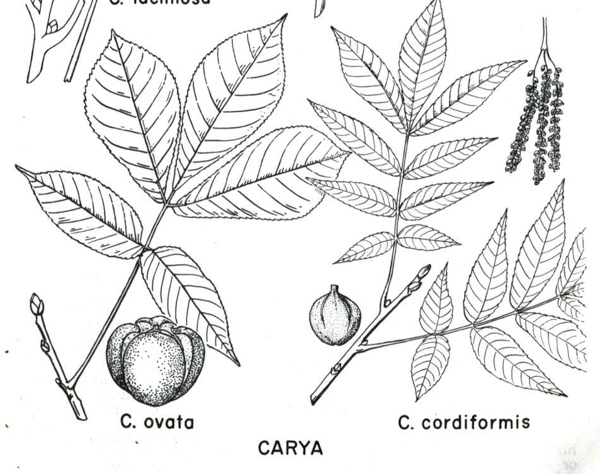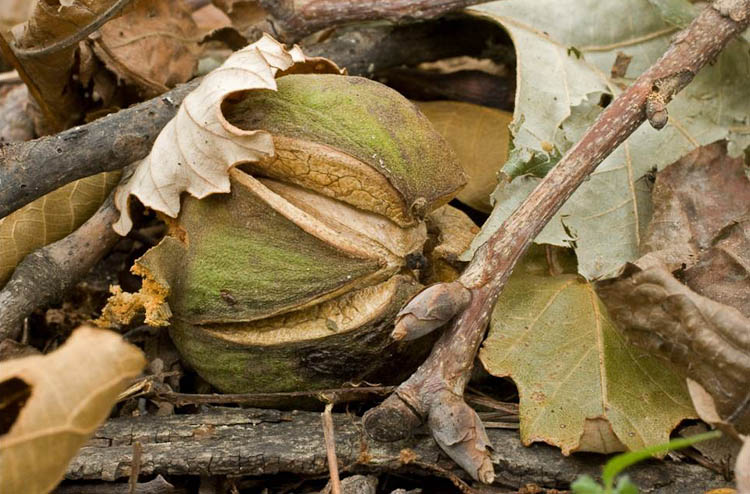shagbark hickory (Carya ovata)
Juglandaceae, the walnut family
How to recognize shagbark hickory. As members of the walnut family, hickories (genus Carya) have large, alternately arranged, pinnately compound leaves. The number of leaflets is only 5-7 (sometimes up to 9) compared with 11-23 leaflets seen on walnuts (genus Juglans).

Shagbark hickory has large 5-parted leaves.
Flowers and fruits. The trees are monoecious (unisexual flowers, both sexes borne on the same trees). The males are presented in branched catkins. The fruits are smooth one-seeded nuts that split open along 4 sutures.
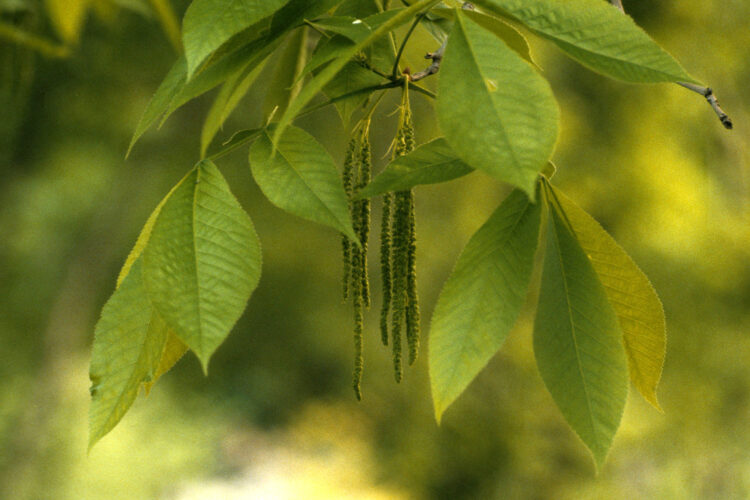
Shagbark hickory male flowers are in branched catkins.
Female are in few-flowered clusters at branch tips.
Shagbark hickory fruits are about 1.5 inches wide, 4-ribbed, and thick-hulled.
Bark. The bark peels off in long wide strips. This is only evident on mature trees though.
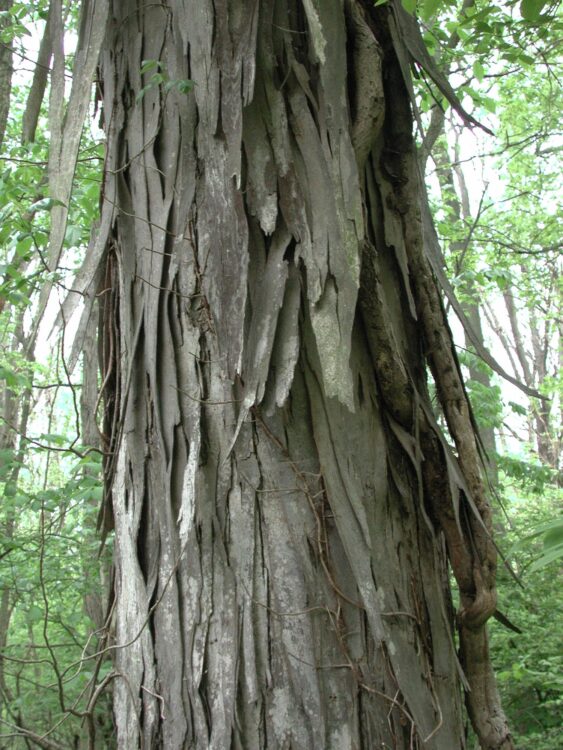
The eponymous shaggy bark of shagbark hickory.
In the winter. Shagbark hickory twigs are stout, with a true terminal bud covered with loose large bud scales. The leaf scars are large, alternately arranged, oval with with about a dozen bundle scars within.
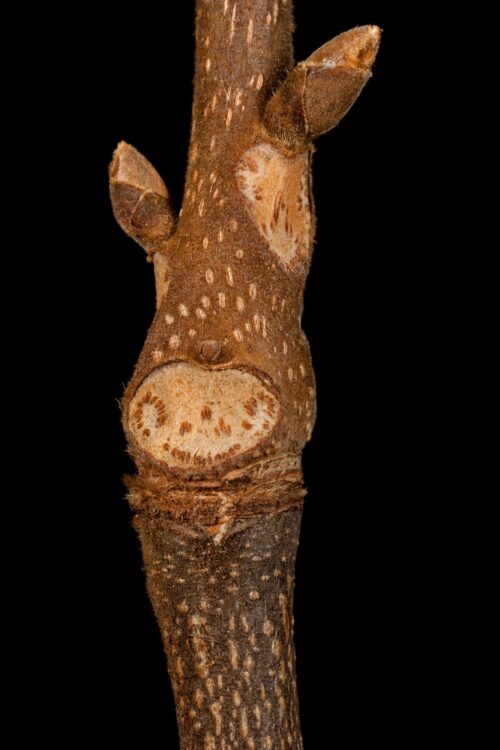
Sharbark hickory twggies are biggies!
Where to find shagbark hickory. E. Lucy Braun, in The Woody Plants of Ohio (1961, 1989; The Ohio State University Press) tells us it is “Widely distributed in Ohio, and commonly associated with oaks in both dry and wet situations”.
Scanned Image from an Old Book
(Flora of West Virginia, by P.D. Strausbaugh and Earl L. Core)
